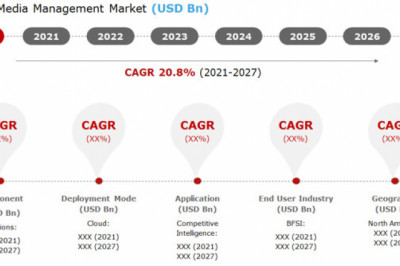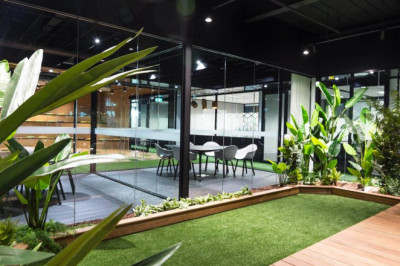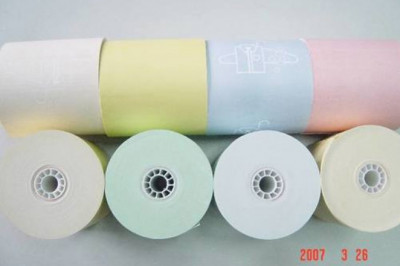views

The Global Modular Robotics Market is forecast to reach $11,514.9 million by 2026, growing at CAGR 10.8% during the forecast period 2021-2026. Modular Robotics generally refer to self-configurable articulated robots which are capable of carrying out variety of tasks through autonomous and dynamic change of geometric structures. These kinds of human robot interactions have been growing popular among industrial sectors including automotive, manufacturing, healthcare and many others owing to better optimization, flexibility and robustness. Technological advancements towards integrating advanced technologies like AI, Industrial Internet of Things edge computing and so on along with capability of improving organizational productivity standards are some of the major factors affecting the market growth of modular robotics. Moreover, increasing automation across healthcare sectors to optimize medical treatment processes is further analyzed to create a positive impact on the market growth of modular Selective Compliance Assembly Robot Arm (SCARA) robotics.
Modular Robotics Market Segment Analysis – By Robot Type
Based on robot type, the modular robotics market has been segmented into Cartesian robots, Collaborative robots (Cobots), Articulated robots, Scara robots, Parallel robots and others. Collaborative robots or cobots registered highest share in the global the modular robotics market in 2020 at 26.5%. Collaborative robots generally refer to those types of robots which are capable of performing tasks by physically interacting with workers across an industrial workspace. As cobots can be conveniently placed anywhere or relocated depending on user needs, it helps in eliminating any kind of non-production activities during the production hours, thereby ensuring optimum flexibility, efficiency and production capabilities for various end use industries. Additionally, these robots are designed with human involvement and collaboration, ensuring a safer work environment specifically in application areas including medical, food & beverages and so on where human errors can create major work disruptions. Features such as easy operation, affordability coupled with deployment of options like plug and play and CAD programming have been also affecting its market growth. Owing to technological advancements related to controllers, various robotic modules and many others, adoption of collaborative robots can eventually rise across major end use verticals like manufacturing, electronics, medical as well as others in the long run.
Request for Sample Report @ https://www.industryarc.com/pdfdownload.php?id=505482
Report Price: $ 4500 (Single User License)
Modular Robotics Market Segment Analysis – By End Users
By End users, the global modular robotics market has been segmented into Food & Beverages, Healthcare, Electrical & Electronics, Metals & Machinery, Automotive, Chemicals with many others. Healthcare sector is analyzed to witness a significant growth in the market at 14.6% through 2026 due to growing shift towards automating medical treatment procedures such as performing surgeries, conducting diagnostic tests and many others with optimum flexibility and ease. Since the hospitals involve conducting varied demanding procedures which needs high amount of accuracy and precision while elimination high human intervention, demand towards self-configurable robots will eventually rise in the long run. In September 2019, Medtronic PLC launched a robot-assisted surgical platform, capable of supporting laparoscopic applications. This modular and upgradable designed architecture involves foot pedals in order to help the surgeons interact with the patients or staffs during procedures. Such developments act as a prime source towards modernizing the medical surgery procedures within healthcare sector. In October 2020, CMR Surgical announced about introducing Versius surgical robotic system within a leading France based public health centre, Argenteuil Hospital. This robotic system was meant to reinforce its shift towards accessible and adaptable surgical robotics across global healthcare units in the near future.
Modular Robotics Market Segment Analysis – By Geography
APAC region is anticipated to have a significant growth in the modular robotics market over the forecast period. With growing dominance of industrial sectors including automotive and electronics mainly across China, India, Japan and others along with increasing shift towards Industry 4.0 trends has been acting as major factors impacting the need towards modular robotics. High investments towards research and development activities as well as increased support towards upgrading healthcare facilities will also help in aiding the growth of modular robotics across the region. Presence of some major market players including Mitsubishi Electric Corporation, Yaskawa Electric Corporation, Toshiba Machine Co Ltd. with many others has been also propelling high market demands towards modular robots. In August 2020, Mitsubishi Electric announced about launching a series of collaborative robots named MELFA ASSISTA within Indian markets. These robots are coupled with safety features like collision detection alongside complying with international safety and robotic standards in order to serve end-use customers with optimum productivity, flexibility as well as faster automation. Such developments are further meant to create a positive impact on the growth of modular robotics market in the long run.
Modular Robotics Market Drivers
Technological advancements like edge computing
Rise of technological advancements such as edge computing can be considered as a major driving factor for the modular robotics market. Integrating edge computing services within modular robots help the end use industries to have easier implementation owing to elimination of equipments like switches, servers or routers. Since edge computing offers capability of achieving real-time predictive maintenance within assembly lines as well as varied plant operations, thereby aiding the need towards modular robots across major industries. Adoption of modular robots with edge computing device integration including sensors and others are getting popular due to providing benefits like continuous monitoring timely defects of the robots, eliminating plant shutdowns or work disruptions, thus saving costs. Moreover, this technology acts beneficial in raising the standards for both processes as well as product quality manufactured using modular robots. In June 2020, ADLINK Technology announced about launching a real-time ROS 2 robot controller, named ROScube-X series specifically designed for advanced robotic applications. This controller offers compatibility with NVIDIA JetPack SDK resources and can perform robotic applications demanding high performance AI computing capability while minimizing power consumption. Such factors are further set to boost the demand towards advanced robotic modules within the modular robotics market over the forecast period.
Improves work productivity
The capability of modular robots towards improving work productivity standards across various industry verticals is also analyzed to be one of the major drivers creating significant market growth. Modular robots are capable of offering benefits including versatility, configurability as well as scalability which increases fault tolerance, thereby eliminating the need for assembly between parts. As compared to conventional industrial robots, these self-configurable modular robots can be easily transformed from one form to another depending on consumer requirements, which helps the end users to spend on variable types of robotic systems. Owing to its versatile nature, modular robots are getting higher adoption within industry verticals including pharmaceuticals, manufacturing, healthcare and so on, optimizing the performance standards of these environments. In addition to this, modular robots are more robust compared to conventional counterparts, as individual modules are generally considered unimportant which undergoes replacement overtime. Also, these robots can eventually compensate for damages either by reconfiguring or autonomous part replacement, thus making it a better alternative owing to its easy handling of complications. Such factors have been highly promoting the growth of modular robotics across demanding industries like pharma, healthcare, manufacturing among others in the long run.
Download Sample Report @ https://www.industryarc.com/pdfdownload.php?id=505482
Modular Robotics Market Challenges
High costs
Designing and integration complexities of modular robots cause high manufacturing costs which can be considered as one of the major challenges impeding the market growth. Designing hardwares or softwares for these robots needs to be integrated with advanced technologies from time to time in order to ensure better work optimization, causing the manufacturers to spend on costly components. Additionally, complexities on robotic development by combining features including precision, robustness, functionality and so on creates the need for skilled expertise. Operating these self-configurable modular robots across end use verticals like medical, food & beverages, automotive and many others can be complex at times, thus need for training of the workforce becomes highly essential. Such factors help in raising its purchasing costs, creating lesser adoption from small as well as mid-size organizations, restraining its market growth.
Modular Robotics Market Landscape
Partnerships and acquisitions along with product launches are the key strategies of the players in the modular robotics market. The major key players in the modular robotics market include ABB Ltd., Mitsubishi Electric Corporation, Yaskawa Electric Corporation, KUKA, Toshiba Machine Co Ltd., Denso Corporation, Universal Robots, Rethink Robotics, Yamaha Motor Co Ltd. and FANUC.
Partnerships/Product Launches/Acquisition
In July 2020, one of the leading custom robotics company, named Advanced Intelligent Systems announced about introducing a modular UV light disinfection robot. This autonomous robot was developed to offer critical support for hospitals, senior care facilities as well as healthcare workers dealing with safety issues during or after the COVID-19 pandemic, thereby eliminating human intervention.
In May 2020, Motiv Space Systems announced about launching a space-rated modular robotic arm system, named xLink. This system offers exceptional adaptability while accommodating varied applications meant for space rated robotic manipulation.
Key Takeaways
Collaborative robots is expected to have a major contribution during the forecast period 2021-2026 in the global modular robotics market owing to high investments towards research and development activities.
Key players such as Mitsubishi Electric Corporation, Yaskawa Electric Corporation and so on are the major drivers boosting the growth of modular robotics within the APAC region.
Related Reports:
A. SCARA Robot Market
https://www.industryarc.com/Report/15360/scara-robots-market.html
B. Collaborative Robots Market
https://www.industryarc.com/Report/17075/collaborative-robots-market.html
For more Electronics Market reports, please click here
About IndustryARC: IndustryARC primarily focuses on Cutting Edge Technologies and Newer Applications market research. Our Custom Research Services are designed to provide insights on the constant flux in the global supply-demand gap of markets. Our strong team of analysts enables us to meet the client research needs at a rapid speed, with a variety of options for your business. Any other custom requirements can be discussed with our team, drop an e-mail to sales@industryarc.com to discuss more about our consulting services.












